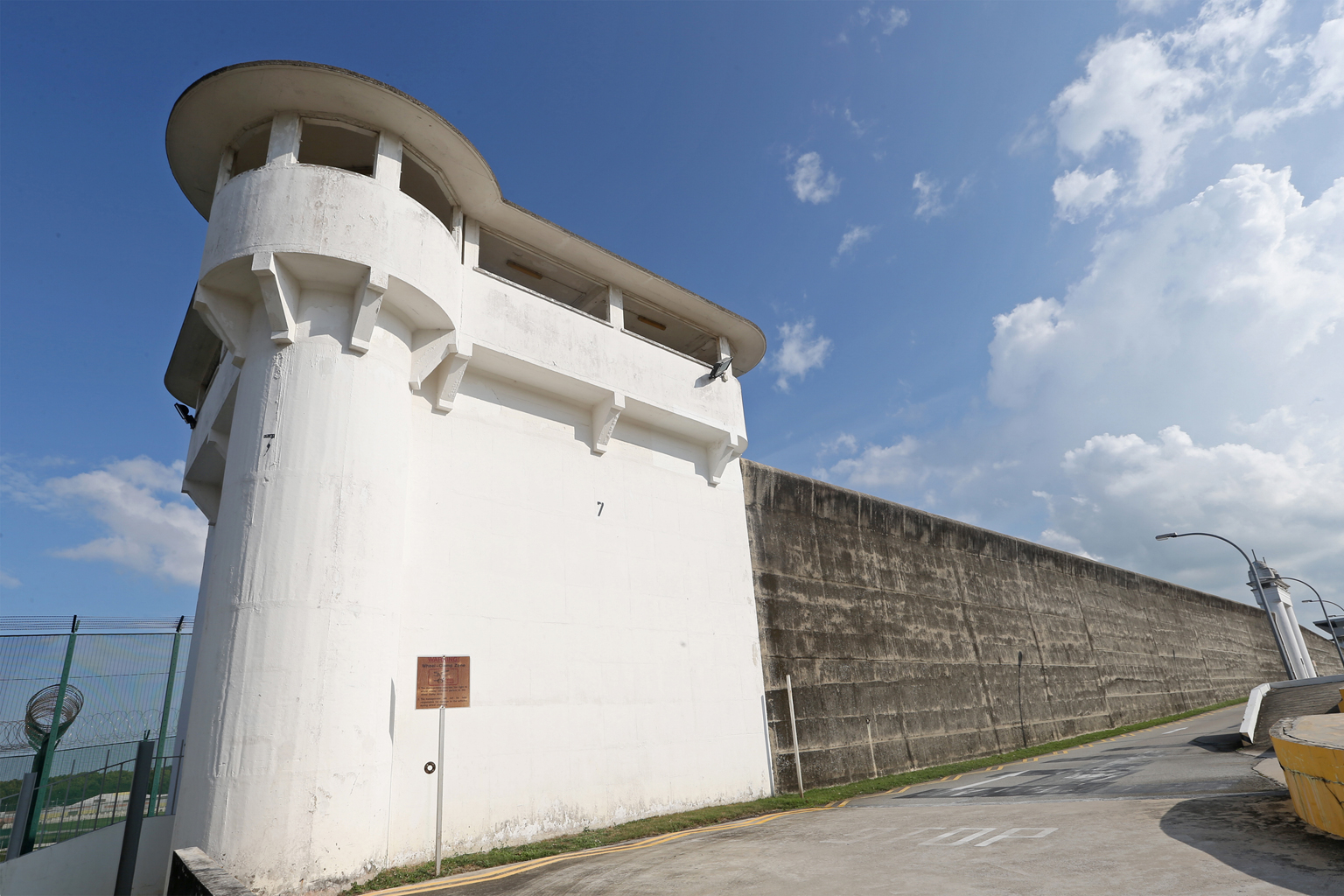Making Changi Prison monument more visible
Area in front of Changi Prison's gate and wall, now hidden by a tall fence, will be redeveloped
Sign up now: Get ST's newsletters delivered to your inbox

The old prison was built within a 6m-tall wall. Left standing today is a 180m stretch of wall, its gate and two turrets (one shown above) that go back to 1936.
ST PHOTO: SEAH KWANG PENG
Melody Zaccheus
Follow topic:
The Singapore Prison Service will redevelop the area in front of the historic Changi Prison entrance gate and wall over the next few years to make it more visible to the public.
The newly minted national monument, gazetted by the National Heritage Board's Preservation of Sites and Monuments (PSM) division yesterday, is now hidden by a tall fence and barely visible from the road. A carpark for the modern Changi Prison Complex lies between the fence and the structure.
The Straits Times understands that the redevelopment could include replacing the fence with a lower perimeter wall.
Heritage experts said the existing layout is not befitting of a structure that is now a national monument.
Dr Yeo Kang Shua, a Singapore Heritage Society executive committee member, said: "We need to give Singaporeans a chance to know the national monument. The wall, gate and turrets have strong visual 'imageability'. But why are they hidden behind a fence?"
Dr Kevin Tan, president of the International Council on Monuments and Sites Singapore, said: "Once you preserve it, you must make it accessible. You must showcase it sufficiently so people can understand the value of what has been preserved."
Some 76,000 Allied soldiers and civilians were marched through the old Changi Prison's gates during World War II for internment as prisoners of war (POWs). Thousands were packed into the facility designed to hold only 600 prisoners.
Dr Yeo suggested that security concerns in opening up the monument to the public can be addressed with careful urban planning design. He cited the Istana, the official residence and office of the president of Singapore. It is highly protected, but its grounds are open to the public on certain public holidays.
The now-demolished Changi Prison was designed by the then Public Works Department as a maximum- security prison. The prison was originally built within a 6m-tall perimeter wall.
Left standing today is the 180m stretch of prison wall, its gate and two turrets that go back to 1936.
In 2003, Australian politicians lobbied for the prison to be saved after they learnt of Singapore's plans to replace it with a new $1 billion prison complex.
Among those who raised the issue were Australia's then Deputy Prime Minister John Anderson, who reportedly spoke to Prime Minister Lee Hsien Loong, as well as then Foreign Minister Alexander Downer, whose father had been interred in Changi for three years.
In March the following year, the Singapore authorities said they would preserve the wall facing Upper Changi Road North, along with its two corner turrets that had once served as watch towers.
The entrance gate at an adjacent boundary wall was moved and fitted into the retained wall.
The old prison, which had two four-storey blocks of prison cells, was torn down in 2004. In its place is the Changi Prison Complex.
Ms Jean Wee, director of the PSM, said the new monument stands as an "enduring symbol of the suffering of those who defended Singapore during the tumultuous war years".
"We hope that this monument will serve as an important reminder to all Singaporeans of the tremendous sacrifice by POWs, and to treasure the peace and harmony we have today," she said.
Dr Tan said the gazetting was "vindication" of the importance of the space, noting that Australia had lobbied very strongly.
"It started with the Returned and Services League, Australia and it went higher and higher. They made the argument that it doesn't belong to just Singapore... that it is world heritage as well," he said.

